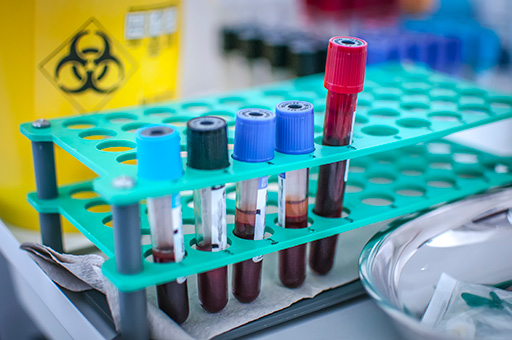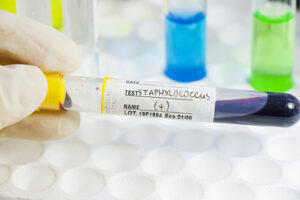
The meningitis illness, which has devastating effects on the brain, is something we continue to discuss. In this instalment of our series, we will cover bacterial meningitis.
Bacterial Meningitis
Pathogens that inflame the meninges can come in a variety of forms. But the most clinically serious form of meningitis is brought on by bacteria. Lifelong impairment may develop because of meningitis-induced brain damage even after pharmacological treatment has been initiated. Therefore, when meningitis symptoms are present, people should not

ignore them. When a meningitis infection is suspected, medical facilities should be contacted promptly.
The following are the types of bacteria that cause bacterial meningitis and how they spread, per a World Health Organization report:
- Neisseria meningitidis is spread through saliva in close proximity (coughing or kissing), as well as through close quarters like campuses and classrooms.
- Haemophilus influenzae, Streptococcus pneumoniae, and Mycobacterium tuberculosis: These are transmitted through close contact coughing, sneezing, and inhalation.
- Group B Streptococcus and Escherichia coli: These two bacteria can be transferred from a mother to child upon birth, and E. coli can also be spread through contaminated food.
- Listeria monocytogenes is a pathogen that can be distributed by food, however, it is typically communicated from person to person.

The microorganisms that cause meningitis do not only produce one type of sickness; rather, they are capable of causing a variety of illnesses. As an illustration, the tuberculosis bacterium, M. tuberculosis, can occasionally (but infrequently) cause meningitis. Additionally, meningitis and otitis media can both be brought on by the
pneumonia-causing S. pneumoniae, and the latter condition has the potential to leave a person permanently deaf. When meningitis bacteria reach the bloodstream, they also cause sepsis, a full-blown immune system attack. The body’s response to sepsis can be fatal, so it has to be treated right away.
Neisseria meningitides, according to the Turkish Ministry of Health, are the most common cause of meningitis in Turkey. Sadly, the same bacterium is the most frequent cause of mortality and disability in the entire world. Due to its ease of transmission, the illness, also known as meningococcus , can move from a single case to a significant epidemic in a relatively short period of time. There are 12 different serogroups of the N. meningitides bacteria, and the ones responsible for extensive epidemics are serogroups A, B, C, X, Y, Z, W, and L. According to reports, serogroup B is the second most prevalent, and W-135, which is thought to have originated from Hajj pilgrimages, is the most prevalent in Türkiye.
In babies and those whose immune systems are compromised, meningitis can quickly proceed to a fatal stage. In pregnant women, it can lead to premature birth, miscarriage, or disability. Meningitis spreads by droplets, therefore those in cramped spaces with poor ventilation are at a higher risk of contracting the disease.

Antibiotic medications are used to treat bacterial meningitis. Based on the findings of the medical tests, doctors determine which antibiotic is the best course of action. However, identifying the pathogen type alone is insufficient for treating meningitis. Antibiotic resistance in bacteria can evolve over time. Through examination of the identified discovered bacterial species’ genes, it is possible to determine which antibiotics it is resistant to. This can be accomplished using the polymerase chain reaction (PCR) technology, which targets bacterial DNA and enables qualitative assessments. The patient’s life and future quality of life depend heavily on the patient receiving therapy as soon as possible, regardless of the type.
Prevention of the Bacterial Meningitis
One of the most crucial ways to lower the risk of bacterial meningitis and discourage its spread in the public is vaccination. One vaccine does not protect against all infections because they each have unique characteristics. For several classes of pathogens, there are vaccines that have been approved and licensed by the

health authorities. Some of these shots, like the BCG or combinatorial vaccines, might be a part of children’s regular immunization schedules. Please get in touch with your primary care physician for further information regarding vaccinations.
Meningitis must be reported when diagnosed. In the event of interaction with a person who has a suspected meningococcal infection, public health experts may advise vaccination and preventive medications (prophylaxis). Prophylaxis has a high rate of success, and the sooner treatment is begun, the more effective it will be.
Meningitis is a notifiable infectious disease. Vaccination and preventive drugs (prophylaxis) may be recommended by public health physicians in contact with a person with a suspected meningococcal infection. The success rate of prophylaxis is high and the earlier it is started, the more successful it will be. For added protection against the spread of meningitis germs, people can regularly wash their hands with soap, cover their mouth and nose with a tissue when coughing or sneezing, and ventilate their area.
References:
https://www.who.int/health-topics/meningitis
https://www.ecdc.europa.eu/en/meningococcal-disease
https://www.cdc.gov/meningitis/index.html
https://hsgm.saglik.gov.tr/tr/bulasici-hastaliklar/menenjit/menenjit-liste/menejit.html





